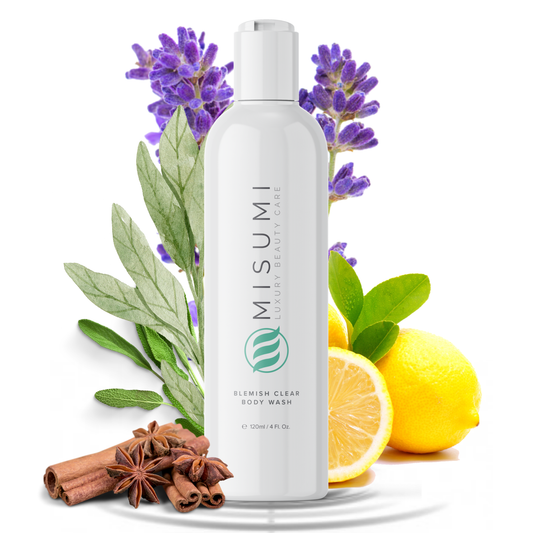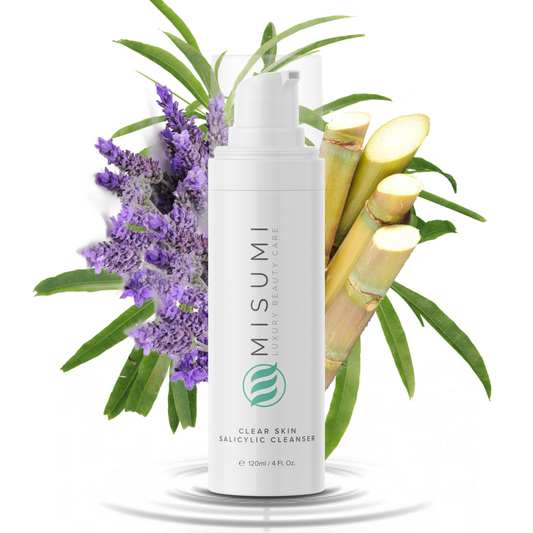I’m getting the feeling that little by little, you, dear reader, are becoming something of a skincare expert. But have you heard of tartaric acid? I’m sure you are already familiar with the benefits of salicylic acid (a BHA), and the assorted class of AHA acids, such as glycolic acid and lactic acid, and other types of natural acids as well, like ferulic acid. All of these acids are mainly used in exfoliation and affect the pH value of our skin, regardless of the similarities and differences between BHA and AHAs.
But so far, tartaric acid has been sorely neglected. Granted, it is a less known, but no less healthy or useful AHA acid. Today is the day when we correct that injustice and tell you all you need to know about tartaric acid and its benefits.
What Is Tartaric Acid?
Before we move on to discussing tartaric acid specifically, a bit of context is in order.
Tartaric Acid Is An Alpha Hydroxy Acid (AHA)
As we mentioned above, tartaric acid belongs to the class of alpha-hydroxy acids, also known as AHAs. Alpha hydroxy acids are naturally occurring substances found in both fruits and vegetables, and often boast powerful antioxidative properties. But in addition to that, alpha hydroxy acids are frequently used in skincare products such as cleansers or exfoliators, because they can remove dead skin cells from the surface of our skin.

Contrary to the oil-soluble BHA acid (also known as salicylic acid), alpha hydroxy acids (AHAs) are hydrosoluble. This means that while AHAs aren’t as effective at reaching the deeper layers of the skin and entering the pores (which are filled with skin oil, called sebum), they are still useful in performing a very efficient sweep of the surface layer of the skin. This makes AHAs, and similar products, especially well suited for people with different skin types. For example, people with normal skin, combination skin, and even sensitive skin can all find alpha hydroxy acids very effective. (And, conversely, people with oily skin will find the BHA and other options much more useful.)
Tartaric Acid Is Special
As we mentioned above, tartaric acid belongs to the family of alpha-hydroxy, hydrosoluble acids. Tartaric acid is a naturally occurring substance, and as most AHAs, it is produced by plants as well. But tartaric acid is a bit special, because its main sources include wine, grapes, apricots, avocados, apples, sunflower seeds, tamarinds and so on.
Did someone mention wine? Yes, indeed! Tartaric acid is in fact, instrumental when it comes to the smell and taste of wine - it is the very compound that gives wine its specific tartness.
The other property of tartaric acid that makes it a bit different than the other AHAs, is that it changes shape when exposed to room temperature. When extracted from its plant sources, tartaric acid receives a white color and becomes crystallized. In regards to wine, this phenomenon is known as “wine diamonds” - tiny crystalline formations of tartaric acid that sometimes appear in the cork.

Additionally, tartaric acid is used in the food and confectionery industry, where it is added to foods to provide them with a sour taste. Typical products that make use of tartaric acid include soft drinks, sodas, vegetable juices, and various kinds of confectionary.
Doesn’t all that sound enticing? Indeed, it does. But I hope that you won’t take this information as an excuse to double down on your wine tasting, sweet munching habits!
Tartaric Acid Has A Long, Rich History Of Use
Even though it’s not well known and rarely used, tartaric acid has a long and, geographically speaking, broad history.
People from Sudan and Nigeria have been extracting tartaric acid from plants for centuries, and have used it mainly as a food ingredient. But the use of tartaric acid is not just limited to the African continent. The Spanish have used tartaric acid in their cuisine since ancient times, which later resulted in the adoption of the acid in a number of Mexican dishes too.
In fact, Mexico is one of today’s largest producers of tartaric acid, exporting a number of very popular products. That tartaric acid has a long, and rich history of use, is further confirmed by the fact that the Portuguese, as well, have used tartaric acid in their food since the 16th century.

Science Is Yet To Discover All The Benefits Of Tartaric Acid For Skin
However, despite this millennia-long use of tartaric acid by people from all over the world, science has yet to research the properties of this acid in detail. Research, so far, is still scarce, and we hope that science will soon get up to speed on tartaric acid. Until that happens though, we will have to resort to people’s experiences with this interesting natural substance. Most of them are positive, but there are some side-effects and precautions too. So, let’s see what these are.
Benefits Of Tartaric Acid
As we mentioned above, science still hasn’t spent enough time researching the specific benefits of tartaric acid for skin. However, the ingredient is fairly well known and generally beneficial for human health, and it’s not such a complicated chemical compound for it to cause serious side effects. It is known that it is an alpha hydroxy acid, and that it possesses strong antioxidant and anti-inflammatory properties. With that out of the way, here are some of the best benefits of tartaric acid.
Tartaric Acid Boosts Your Immunity
Being a great source of antioxidants (note: antioxidants are excellent for the skin), tartaric acid can boost your immune system and shield your body from infections, and any life-threatening diseases in the long run. In the sections above, we made a brief mention that tartaric acid was mainly found in grapes, wine, apricots, apples, avocados, tamarinds, and sunflower seeds.

That means that including any of those fruits into your diet can bring you a steady supply of tartaric acid, and in turn, a nice boost to your immunity. Not to mention that all of those fruits are overflowing with plenty of vitamins and minerals too, like Vitamin C, Vitamin E, Vitamins B5 and B12, and so on.
Tartaric Acids Aids Digestion
The rich, and long culinary history of tartaric acid makes it one of the gastronomically most well-known, and best-utilized nutrients. There is a very good reason that tartaric acid is used as an additive to various foods and dishes from Sudan and Nigeria to Portugal, Spain, Mexico and so on - it’s an excellent digestive. Tartaric acid helps your body break down whatever it eats more easily, making eating a more pleasant experience.
But, there is another benefit. By improving the rate of intestinal absorption, and thus improving the rate at which your body receives all the healthy nutrients, tartaric acid also fights flatulence. Which… just might be the reason why people began using it in the first place.
Tartaric Acid Improves Glucose Intolerance
Perhaps one of the reasons why tartaric acid became a staple of the cuisine of so many peoples is that it also boosts glucose intolerance. While most people won’t find this of particular benefit, millions of people around the world who suffer from diabetes and glucose sensitivity will. If you’re one of those people, you can consider using tartaric acid supplements or enjoying some of its fruits.

Side Effects Of Tartaric Acid
As with everything, things have potential negative sides as well. In the case of tartaric acid, the possible dangers are not that many. In fact, there is only one known side effect that the ingestion of this substance can cause. This side effect, however, can take many forms.
Tartaric Acid Can Cause Digestive Problems
Especially in the long run. If you eat too much of both natural, and processed foods that contain tartaric acid, some unpleasant symptoms can make themselves present. For example, tartaric acid can lead to abdominal pain, inflammation, feelings of nausea, and even gastrointestinal infections in the long run. This means that you should really avoid ingesting significant amounts of pure tartaric acid. As the ancient Greek poet Hesiod said - everything in moderation. No doubt he was probably enjoying a glass of wine when he wrote that. Or a terrible hangover.
Summing It Up
Tartaric acid belongs to the large family of alpha-hydroxy acids. It is a naturally produced substance mainly derived from plants such as grapes, apricots, avocados, apples, tamarinds, sunflower seeds, while it is also found in wine too.

However, science has yet to research the specific benefits of tartaric acid for the skin. Many peoples have used tartaric acid throughout history for its digestive and health benefits, and have turned it into a staple of their cuisine. Today, tartaric acid is chiefly used as an additive to soft drinks, and confectionery products, for the purposes of giving foods a sour taste.
What we know for sure is that tartaric acid can boost your immunity, improve digestion and increase glucose intolerance. Be careful, though - eating (or drinking) too much tartaric acid can cause a variety of digestive problems. So, maybe heed the ancients - and stick to just one glass of wine.
This information is meant to supplement, not replace advice from your doctor or healthcare provider and is not meant to cover all possible uses, precautions, interactions or adverse effects. This information may not fit your specific health circumstances, and its goal is to offer a general view of the subject. In case you are suffering from a severe case of acne, you should consult with a dermatologist or a certified medical professional.








